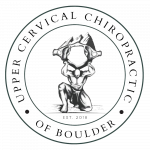What is Scoliosis in Children?
Scoliosis is a spinal condition that usually develops in early childhood, commonly affecting children between 10-15 years of age. Scoliosis is characterized by a curved or rotated spine that gives children a twisted or uneven gait.
Signs and Symptoms of Scoliosis in Children
It is relatively easy to recognize the signs and symptoms of scoliosis in children. Children with scoliosis often present with a distinctive height difference between their hips and shoulders, with one side being significantly raised compared to the other.
Some other signs and symptoms to look out for include back pain, a rotating spine, a full body lean, a protruding rib cage, and breathing difficulties. Some cases of scoliosis are so mild that there may be little to no side effects on the spine. However, in severe cases, symptoms can become permanent if left untreated.
How the Upper Cervical Spine Affects Scoliosis in Children
Up until recently, the cause of scoliosis has been largely unknown. However, recent research has provided strong evidence to suggest that a misalignment in the upper cervical spine could be a potential trigger for scoliosis in children.
Children often experience bad falls or sporting accidents when they’re younger that result in a misalignment to the upper cervical spine. These misalignments are usually unnoticeable and are often left untreated following the incident. However, what most parents don’t realize is that these misalignments have a cascade effect on the subsequent growth and development of the rest of the spinal column and the surrounding muscles.
The C1 and C2 vertebrae (the atlas and axis) are two of seven vertebrae that make up the upper cervical spine. Sitting at the top of the neck, these vertebrae provide a stabilizing framework and support structure for the skull, neck, and shoulders. As a result, a misalignment in these two vertebrae can cause a visible lean or tilt in the head and shoulders. If the misalignment is left untreated, the uneven weight distribution can cause the spine to curve or rotate in an attempt to compensate for the imbalance. In most cases, the body is able to self-correct these imbalances. However, in some cases, the body is unable to self-correct, leading to the development of scoliosis.
How Our Treatment Works
At Upper Cervical Chiropractic of Boulder, our expert chiropractic specialists, Dr. Christina Coblish and Dr. Ryan Moeskau, have had great success using the Blair Upper Cervical technique to treat scoliosis in early and late childhood. The Blair Upper Cervical technique is a gentle, natural, and effective treatment method that doesn’t involve any drugs or surgery. Instead, Blair practitioners use advanced diagnostic tools to locate the source of the problem and then deliver a precise and gentle adjustment to the upper cervical spine. This encourages the spine to heal and correct itself, resulting in long-term relief from scoliosis.
The first step in this process is to determine if your child’s scoliosis is caused by a vertebral misalignment in the upper cervical spine. To do so, our team will typically use a range of diagnostic tools, including cone-beam computed tomography (CBCT) scans. In particular, a CBCT scan is used to generate a dynamic 3D image of your child’s spine, allowing us to get an accurate picture of the position of the upper cervical vertebrae and identify any areas of misalignment.
If a misalignment is detected, Dr. Coblish and Dr. Moeskau will take steps to realign the affected vertebrae. Using low-force Blair correction techniques, Dr. Coblish and Dr. Moeskau will gently and precisely adjust the affected vertebrae, restoring natural alignment and proper function to the upper cervical spine.
If you’re looking for a painless, non-invasive, and natural treatment for your child’s scoliosis, Dr. Coblish and Dr. Moeskau can help. We service patients across Colorado, including Boulder, Longmont, Louisville, Erie, Lafayette, Broomfield, and Denver.


